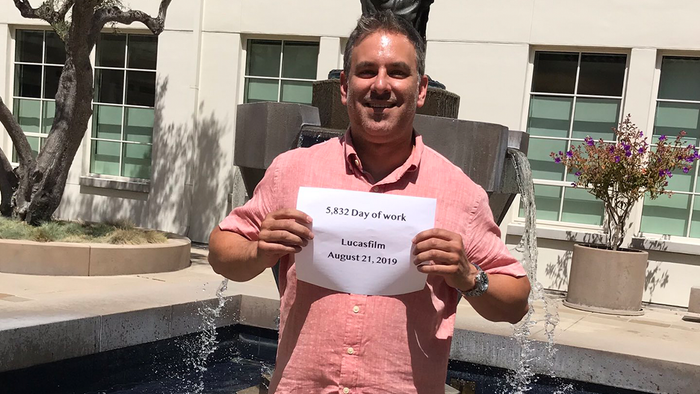Grand Theft Game Design: Part 1 - Props
Have you ever wondered why, in some games, you can seemingly knock over tough/heavy/hard objects with ease, but then when you come into contact with something as light as a feather, you get stopped dead in your tracks?

Have you ever wondered why, in some games, you can seemingly knock over tough/heavy/hard objects with ease, but then when you come into contact with something as light as a feather, you get stopped dead in your tracks? Here's a look at why this might occur using Grand Theft Auto 5 as a example. This article first appeared on GTA 5 Cheats.
Have you ever played GTA 5, crashed into a tree and thought to yourself “damn, it’s strange how trees in this game have trunks stronger than the opinion of an ultra hardcore feminist, while lamp-posts offer about as much resistance than the French during wartime.”? Well, you’re likely not alone.
Those aren’t the strangest things, either. In GTA 5, it’s a toss of a coin whether that shrub you’re hurtling towards at terminal velocity happens to be non-corporeal or actually a brick wall that has mastered the art of deception.
Like any other game, GTA 5 features a number of game-design tricks and “cheats” to make the whole thing actually work. Those who haven’t done much or any game development might be oblivious to some of the trickery that goes into making an immersive open world, while others might note some techniques and find them strange.
If you’ve ever scratched your head at these little tidbits of quaint little details and wanted to know the ‘why’ behind it, join us and take a tumble down the instanced rabbit hole unveilling some of the strangest features of GTA 5 and its predecessors.
No AAA game is ever developed without someone on the team thinking “screw this, we’re making a 2D sidescroller instead” at least three times during production. In spite of it being 2017 and technology being so advanced that an outdated smartphone today will possess more computing power than NASA did during the Apollo missions, technical limitations still cause the spread of rampant caffeine addiction among game developers.
Games need to be optimized, because when they aren’t, things like Batman: Arkham Knight on PC happen. Unfortunately, not all gamers afford the insanely powerful workstations used by developers, meaning that there is only so much computing power to go around, and believe it or not, your i5, GTX 980 can’t render the whole island of San Andreas at those graphical settings, and stronger, more up-to-date systems can’t do it either.
This is where LOD comes into the picture. LOD, standing for “Level Of Detail” is a practice that alters the number of polygons and other factors of assets depending on their distance from the camera. Basically, everything you actually see in a video game is made up of polygons, triangles to be exact, and the less of them there are, the less of a hard time your GPU will be having. Or CPU, or even RAM, depending on how the game is built.
Fun Fact: GTA 5 is more reliant on RAM and CPU power than it is on GPUs and storage, which is why: 1) using an SSD won’t fix those insanely long loading screens; and 2) lengthy sessions will eventually lead to a performance drop, because the game leaves some of its junk in the RAM, which you eventually run out of. When this happens, storage is used to simulate RAM, but this is significantly slower.
Basically, if you’re so far away from a shrub that you wouldn’t notice details like individual branches or even depth, there is no reason to spend resources on rendering all that flash. Instead, the shrub will “devolve” into a less detailed and therefore less costly form. If you were to see this version up close, you’d probably think you were playing GTA 3 not 5.
Something that old-time gamers might remember, maybe even fondly, is a technique called billboarding. Remember how in Doom or Dark Forces, pretty much everything that wasn’t part of the level itself (meaning walls, doors) would always turn to face you? You couldn’t get “behind” any props because they were all 2D sprites that simply rotated to face the camera at all times.
It was hardly even an illusion, but we had to make do. What’s surprising, however, is that the technique is used even today. Even the newest releases have billboarding present in their LOD profiles in some form. Most often this is used to simulate density. If you’re looking at, say, a forest from far away, instead of having a mass of low-quality 3D tree models, you’re looking at very few low-quality 3D tree models with lots of 2D sprites sprinkled in between to make the forest seem dense.
The same is used for cities in the distance, and even people. If you’ve played Mass Effect 3, you might have noticed that in the prologue mission in Vancouver during the Reaper attack, if you look down to the streets, you’ll see tiny people running in a panic (oddly enough, they run towards the Reaper, but that’s another story). Those are quite obviously 2D sprites and not actual 3D models of people.
Another case where this is used in GTA 5 is the shrubbery. Those various little shrubs you find in the game go all 2D whenever you’re far away enough. The next time you boot up the game, try and spot where billboarding is used.
Talking about shrubs, some players may have noted that some shrubs allow them to pass through them as if they weren’t even there, while others were solid enough to stop a tank. Or several tanks (why nor it nor trees could stop the train is another interesting story).
Now, believe it or not, shrub density in GTA 5 isn’t random. While there are exceptions to this rule, you’ll find that most shrubs near or around roads and other areas players can be expected to drive through frequently will be solid, while shrubs in places where players have no business driving vehicles will be non-corporeal.
The goal here is to help players get back on the road if they go off course by stopping them with a shrub before they go too far from said road. While it might wreck the car, it might also stop you from falling down a cliff or something.
So, that’s shrubs down, but what’s with the trees? Well, thing is, that part is actually pretty realistic. If you’ve ever seen pictures of accidents where cars crashed into trees, usually the car will be twisted beyond recognition and the tree will be all fine and dandy.
Knocking down a moderately thick tree would be difficult to do even with a tank, lest you use the cannon. Lamp-posts, on the other hand, are designed to be weak and give way when crashed into, in order to be safer and reduce risk and danger when accidents do occur. Often times when some drunk drives into a lamp-post at high speeds, the post will offer so little resistance that the airbags won’t even activate.
So why are trees entirely indestructible, instead of simply being immune to being run over by vehicles? Surely explosives would damage a tree in real life? Well, yes, you’d be right, but that would require additional work for a minor detail and no small headache for the already sleep-deprived programmers who practically live off Red Bull and Xanax. Plus, someone has to model those 200+ vehicles in the game, the omission of which would likely result in a freaking riot.
Read more about:
BlogsAbout the Author(s)
You May Also Like








